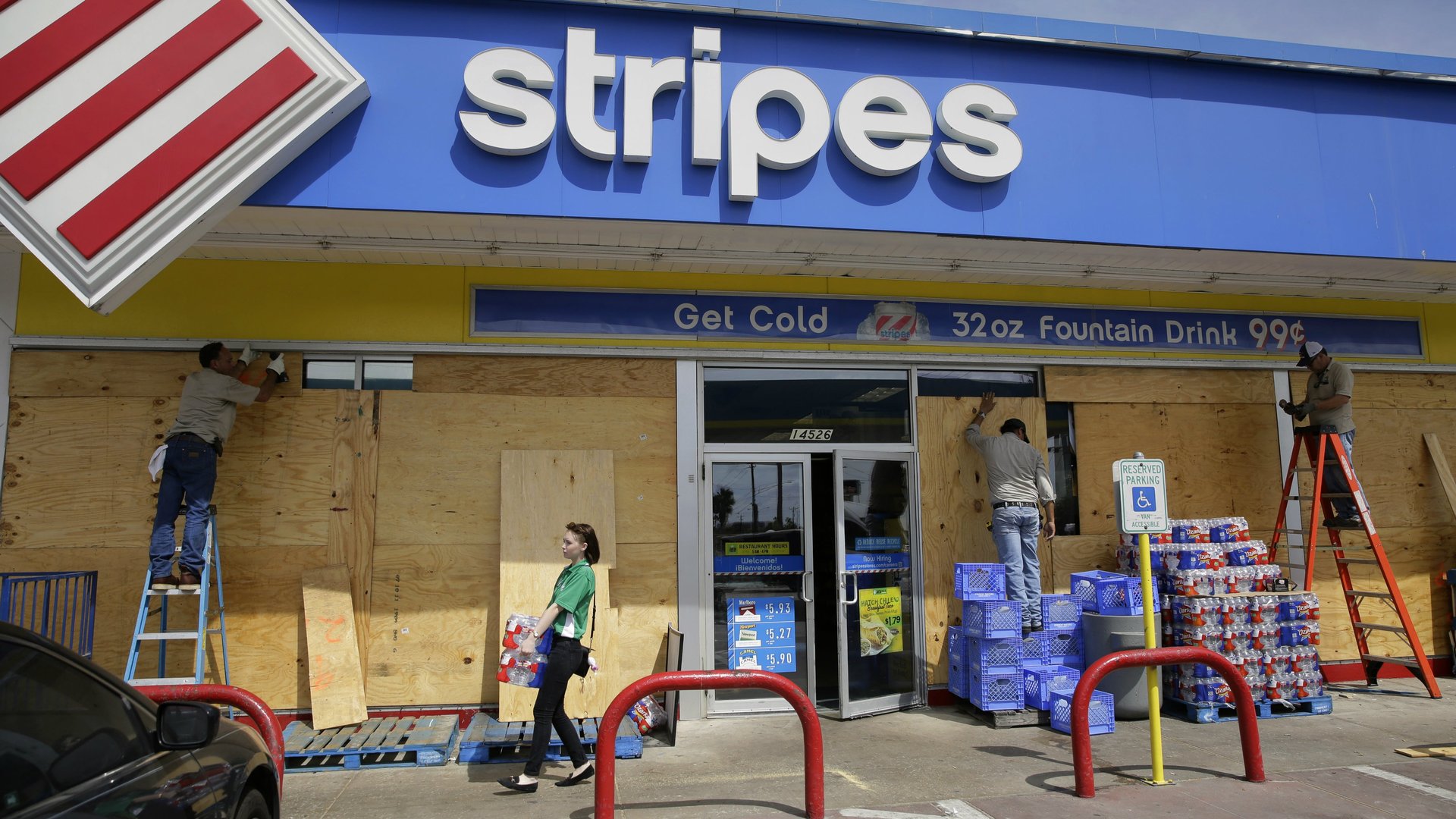Corporate “jump teams” spring to action during hurricanes, wading into chaos to reopen stores
Clocking 130mph winds and bringing nearly 40 inches (102 cm) of rain to the Houston, Texas area, Hurricane Harvey has been called the most powerful storm to hit the US in 12 years. It wrought still untold damage on the region, including upon hundreds of commercial zones that supply food and general goods.


Clocking 130mph winds and bringing nearly 40 inches (102 cm) of rain to the Houston, Texas area, Hurricane Harvey has been called the most powerful storm to hit the US in 12 years. It wrought still untold damage on the region, including upon hundreds of commercial zones that supply food and general goods.
Getting stores back up and running after natural disasters has become something of an art form for large companies, and nearly every major restaurant and retail chain has developed a way to contend with this brand of weather-related chaos.
“We have an operations response team, and this is all that they do,” says a Cracker Barrel spokeswoman. “The team deals with natural disasters.”
As storms barrel toward commercial areas, corporate emergency-response teams from restaurant and retail chains are dispatched to assesses meteorological developments, staffing changes, and retail shipments. These teams are responsible for figuring out where a storm will strike hardest, and then building strategic plants to respond accordingly.
Cracker Barrel has about 12 locations that sat in the path of Hurricane Harvey. And while some experienced delayed openings following the storm, only one location, in Beaumont, Texas, remains closed nearly a week after the hurricane hit.
It was a similar story for Walmart, says spokesman Ragan Dickens. The massive retailer counted about 273 stores that were affected by the storm. On Tuesday (Aug. 29), 134 locations were closed, including distribution centers and a number of Walmart’s Sam’s Club-brand stores. Thanks to the work of the company’s operations team, only 21 remained closed just two days later, Dickens says. And when stores come back online, the response team strategically calls for retail shipments packed with supplies that will be needed in specific areas.
“You’ve got thousands and thousands of people who are displaced from their homes and in shelters,” Dickens says. “When you open a retail outlet that has home goods and products, you’re going to see lines for a little bit.”
In areas where flood waters are still high, nearby Walmart locations are being replenished with food and bottled water. In areas where the waters have subsided, shipments contain all manner of cleaning supplies and disinfectants, Dickens says.
Other chains, such as Kroger, have done the same thing. “We have dispatched trucks from Kroger distribution centers across the country to help replenishment and recovery efforts in Greater Houston,” says Kristal Howard, a spokeswoman for the grocery chain. “Almost 600 trucks of food, water, and supplies have entered the Houston market in the last 48 hours.”
In some cases, these emergency response teams are so effective they’ve help distinguish the brands for which they work for. Waffle House, for instance, has earned notoriety for its corporate “jump team,” which is deployed to weather-battered areas to fill in for employees who are dealing with storm damage to their own homes. The effectiveness is obvious. In 2011, when Hurricane Irene barreled up the US east coast, 22 Waffle House locations lost power yet only one of them stayed closed for more than a single day.